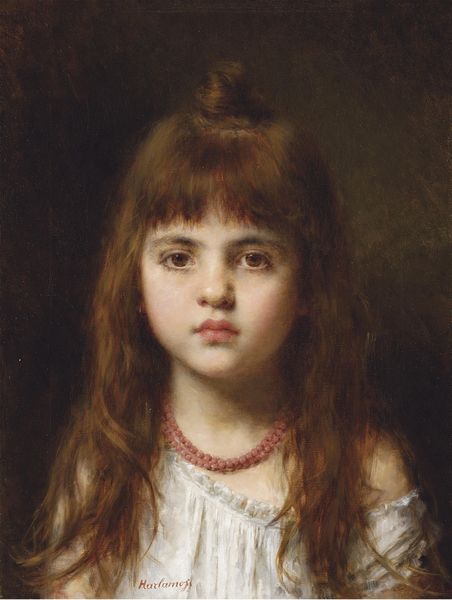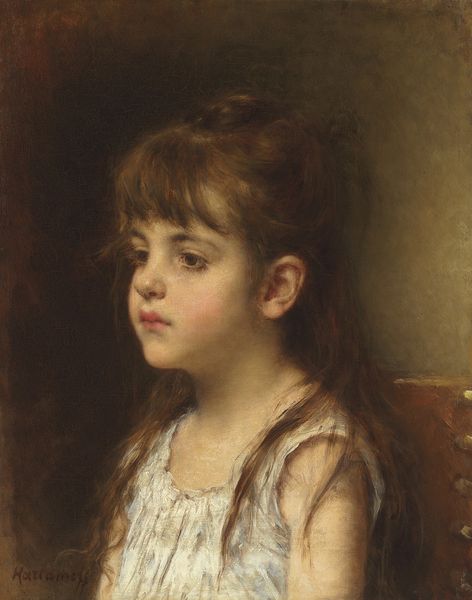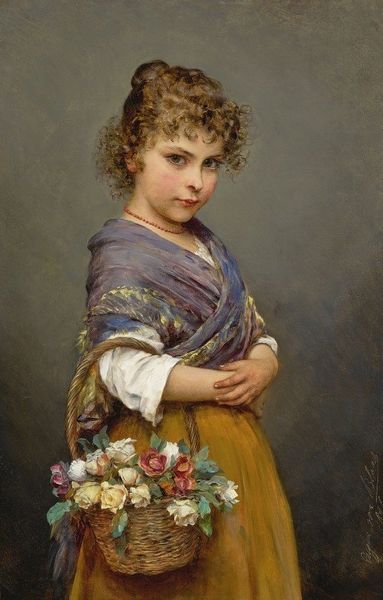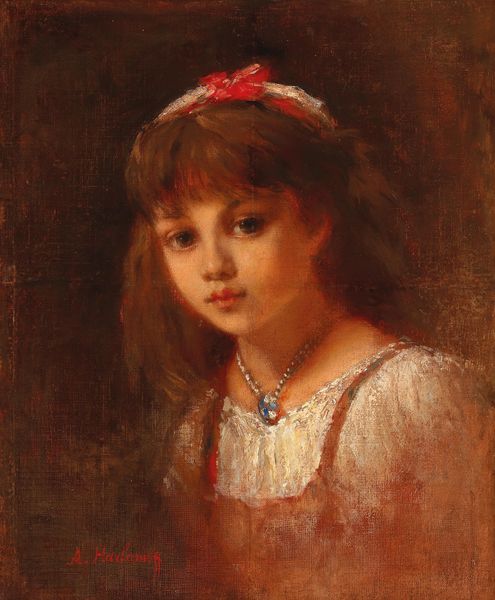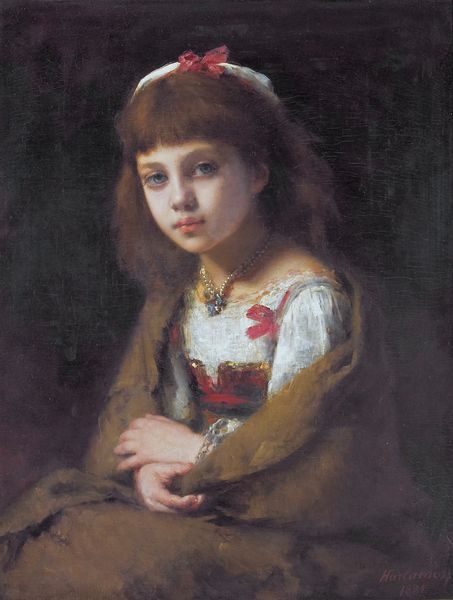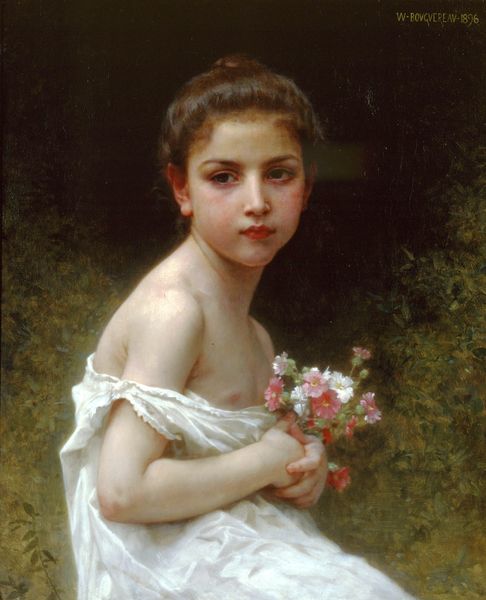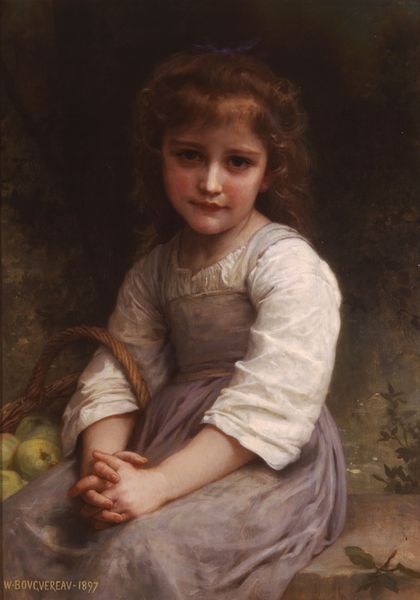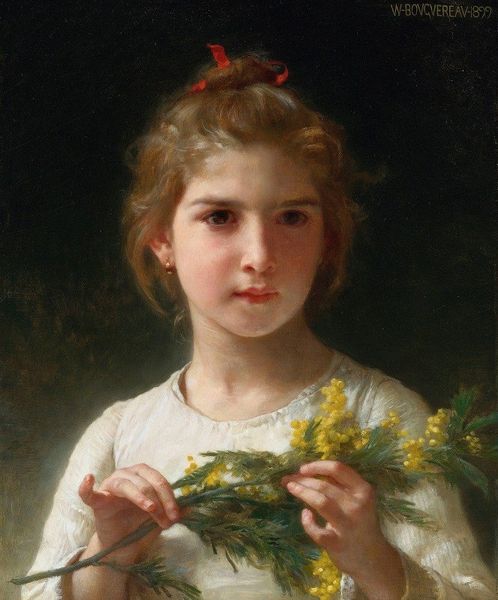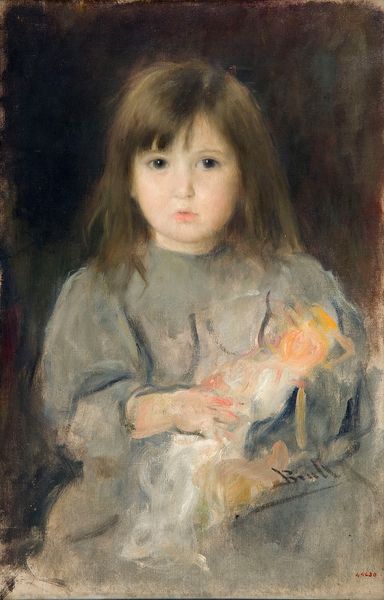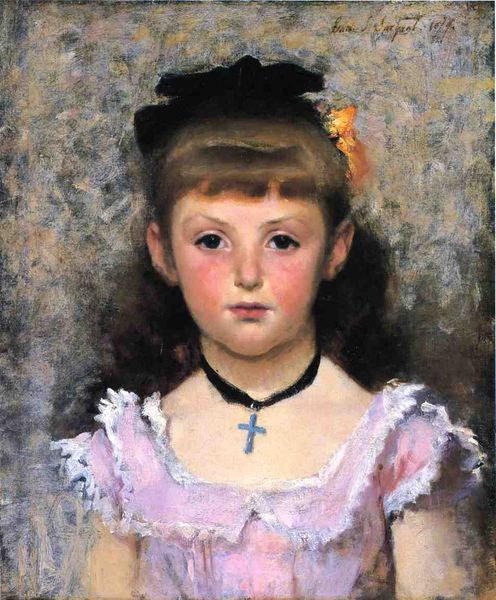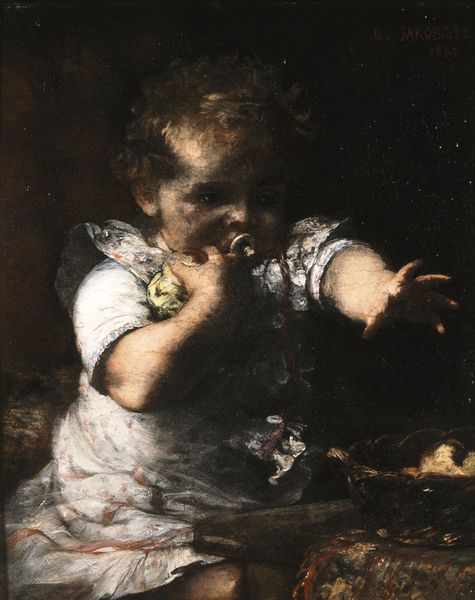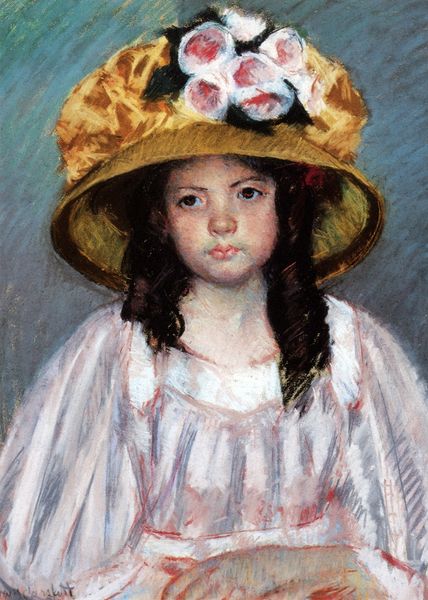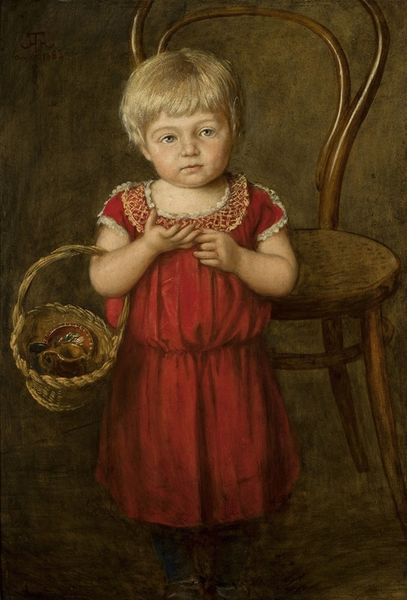
Copyright: Public domain
Curator: Here we have Anton Romako's "Mathilde, the Artist’s Second Daughter," painted in 1870. Editor: It's a touching image. The somber color palette and that child’s rather intense gaze certainly grab one's attention right away. What strikes me most is the clear focus on texture throughout, especially in the rendering of the dress. Curator: It's more than just touching, it provides some valuable insights into how childhood was being regarded in Viennese society at this time. Middle-class families were starting to want mementos, idealized memories of their children, displayed in domestic settings. Editor: Yes, domestic portraiture was certainly in vogue, but Romako really highlights the girl's presence within the frame. The rough, visible brushstrokes contribute to the piece’s almost palpable weight, and the lighting casts strong shadows, particularly around her eyes, lending her an unusual, thoughtful gravity for such a young figure. Curator: And consider the symbolic items, she holds a decorated pilgrim’s staff with what looks like a scallop shell. Those could be allusions to Mathilde as someone about to embark on her journey in life. It reflects the broader cultural values regarding youth and innocence, or rather expectations imposed on children. Editor: Absolutely. The textural richness contrasts quite powerfully with the overall stillness of the pose and the subtle gradations of light and shadow in her face, giving her a compelling three-dimensionality. Notice how Romako’s composition guides our eye, leading us carefully over the surface—beginning with her penetrating stare then down her garment and along that staff she’s clutching. Curator: And how this contrasts so strongly with Romako’s own troubled life. Despite initial success, he struggled to fit into Vienna's established art scene. This commissioned family portrait offers a fascinating counterpoint to his more expressive, psychologically fraught works. Editor: This concentrated effect seems wholly intentional on Romako's part. Its execution certainly speaks volumes to his technical control as a painter. It seems a straightforward and unadorned depiction but carries significant expressive power. Curator: A very good encapsulation. Through this work, we glean both a glimpse of Romako's artistic capacity within certain socio-cultural constraints and his approach to a genre loaded with bourgeois sentimentality. Editor: Indeed. I'd add that the artwork's surface intricacies and carefully managed pictorial space offer a subtly affecting portrayal that stands out within this traditional painting style.
Comments
No comments
Be the first to comment and join the conversation on the ultimate creative platform.
